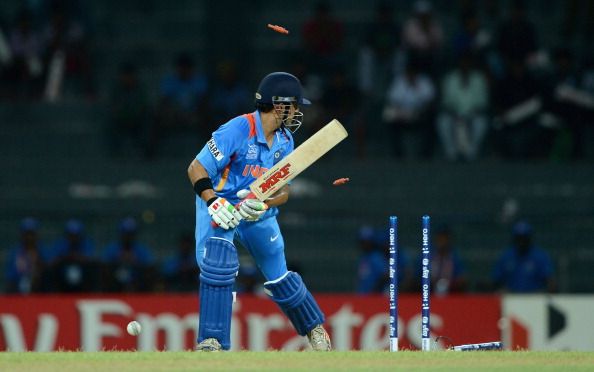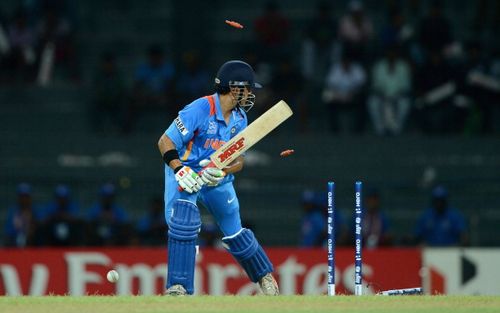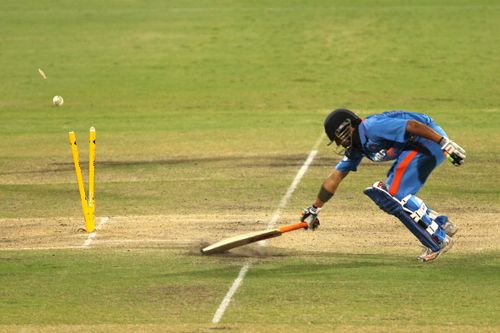
A good start is half the job done? Not quite for Gambhir
These are tough days for both Indian cricket and its followers. While the squad is in transition, the team’s results have gone from bad to worse. So it is imperative that at this juncture the senior members in the squad put their hands up and be counted.

Gautam Gambhir is one such corner stone for India. Apart from being the highest scorer in the finals of both our successful World Cup campaigns, the platform that he and Sehwag lent to India’s batting at the top was described as one of the key reasons that catapulted India to the top of Test Cricket. Sadly those days are a thing of the past and Gambhir’s Test credentials have been steadily on the wane for the last couple of years.
His ODI performances however, elicit mixed response from fans. While some opine that his ODI exploits have remained satisfactory, others believe that even in this domain Gambhir’s decline is palpable. To separate facts from perceptions, I took recourse to hard data. The truth, as it happens so often, lay somewhere in the middle.
I divided Gambhir’s ODI career into two zones. First zone involved the phase from January 2007 to December 2010, which is portrayed as Gambhir’s hey days. The second one is from January 2011 to January 2013, a period that is considered by some as his period of struggle. The table below throws up some interesting numbers.
| Period | Innings | Runs | Average | 100 | 50 |
| Jan2007-Dec 2010 | 85 | 3271 | 43.04 | 8 | 20 |
| Jan 2011- Present | 38 | 1483 | 40.08 | 2 | 13 |
While there has been a marginal dip in the average over the last two years, it hardly indicates any significant drop in form. However it is the last two columns that yield more significant insights. We see Gauti scored in excess of 50, 28 times out of 85 attempts between 2007-2010. This implies that on an average, in every 3 innings (approximate) he has batted, he has gone on to score a half century or more once. In the next phase the southpaw has actually managed to better that by scoring in excess of a half century once in every 2.53 innings (15 times out of 38 attempts). Hardly the sign of a man whose skills are on decline.
However from this chart it is also evident that this diminutive opener has struggled to convert his useful contributions to match defining/altering performances in the last two years. While in the first phase Gambhir converted 8 of his 28 fifty plus scores into three figures (1 century every 3.5 50+ score) the numbers have been drastically lower in the second phase when he has scored a century in only two of the fifteen instances in which he has gone past the half century (1 in every 7.5 fifty plus score). To put things in perspective, Sachin Tendulkar has scored a century in every 2.95 times he has reached the halfway mark (49/145) while his long term opening partner Sourav Ganguly converted one out of every 4.27 half centuries into three figures (22/94).
Now looking at these figures one may be tempted to dismiss them saying as long as he continues to perform why should we get obsessed with whether he is scoring a century or not, which in essence is nothing but a piece of statistics. To probe that I started looking at each of the half centuries and centuries that he has scored between 2011 and 2013. Compiled below are six of Gauti’s best performances in the last two years and how it reflected on India’s position when he got out and the final result.
| Date | Opposition | Setting a score/Chasing | Gambhir’s Score | India’s Position when he got out | Match Result |
| 02-Apr-11 | Sri Lanka | Chasing | 97 | Required 51 runs of 52 balls | India Won |
| 12-Feb-12 | Australia | Chasing | 92 | 91 runs still required | India Won |
| 14-Feb-12 | Sri Lanka | Chasing | 91 | 57 runs of 58 balls | Tie |
| 13-Mar-12 | Sri Lanka | Setting target | 100 | Out in 42.3 overs | India Won |
| 28-Jul-12 | Sri Lanka | Chasing | 102 | 90 runs to win | India Won |
| 04-Aug-12 | Sri Lanka | Setting target | 88 | Out in 39.0 overs | India Won |
If we look at the table mentioned above we can see that while most of his significant contributions have resulted in India’s triumph but when he got out the victory was not guaranteed. In simpler words Gambhir had failed to finish the game off. Even when India was setting a target Gauti was absent during the slog overs when he, as a set batsman could have accelerated India’s innings.
What would perhaps irk him even more is the fact that out of the fifteen times in which he crossed 50 during this phase, he has been run out five times! That is why it is plausible that in the minds of the fans these innings did not register as match winning ones and consequently they felt that the southpaw is not the same force as he used to be between 2007 to 2010; a period in which we witnessed him notching scores like 150*, 138*, 126*, 107* while chasing and even scores like 150 when batting first.

Owing to the Little Master’s exit from limited overs arena and Sehwag’s absence on account of his indifferent form, India’s top order sports a new look. Also it appears that law of averages is finally catching up with Kohli. All of this implies that if India hopes to put on a consistent show with the bat in the near future, Gambhir has to lead the way from the top with some match defining innings.